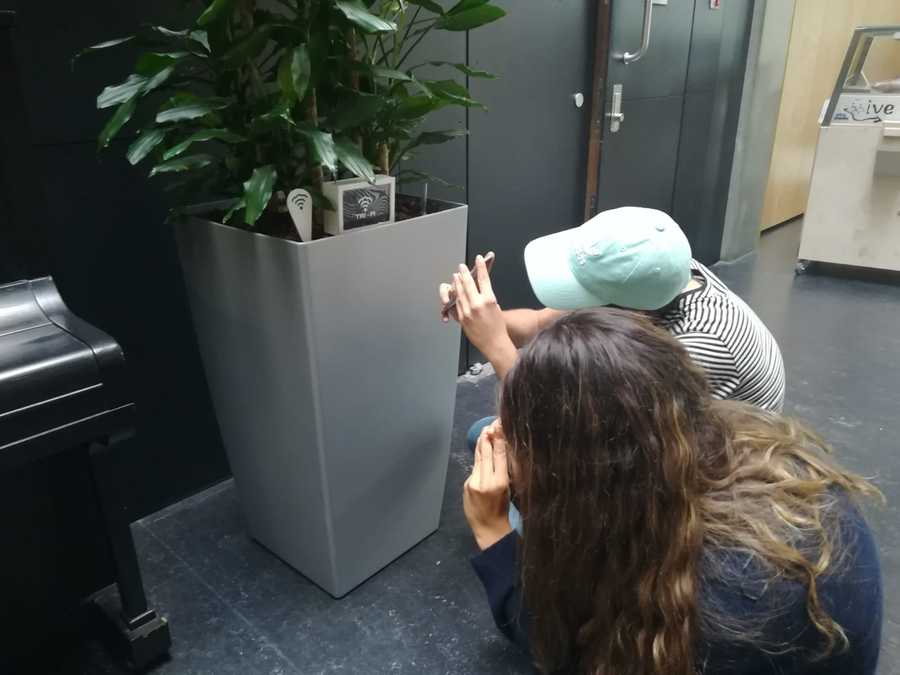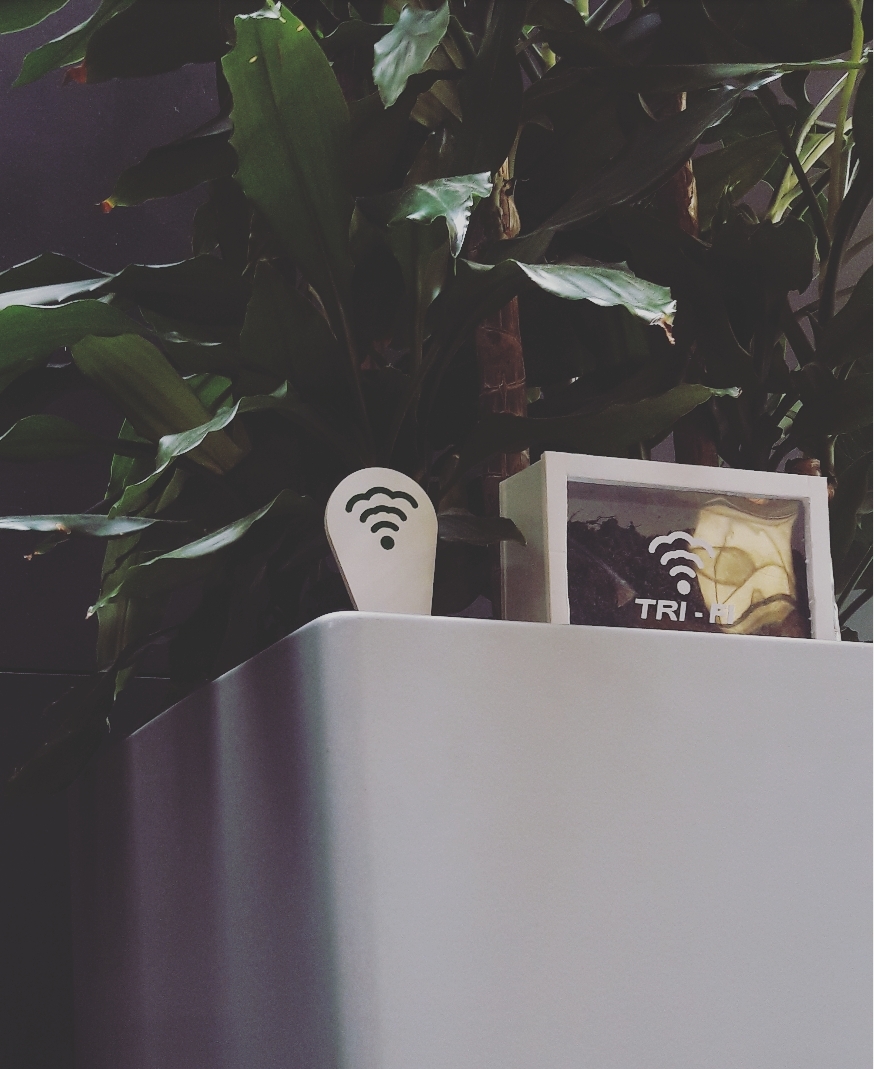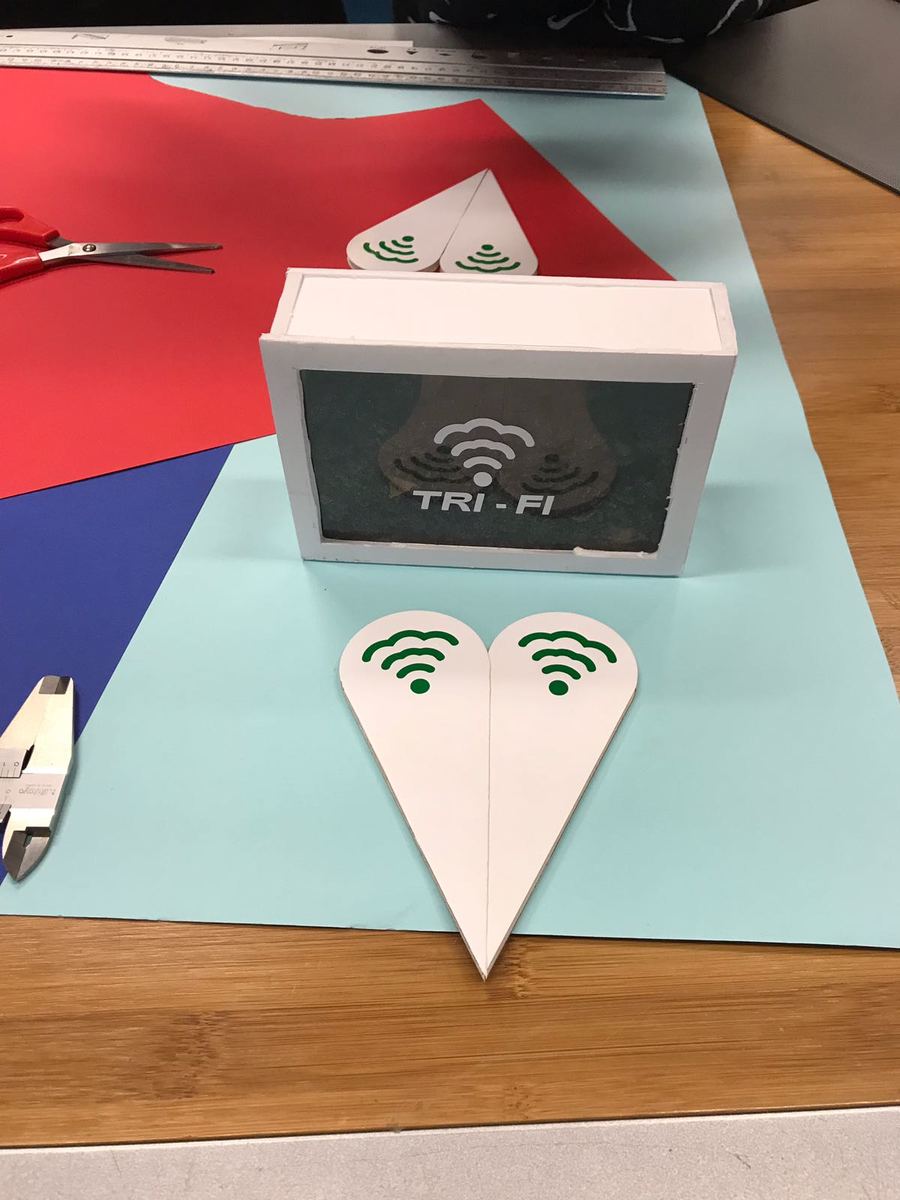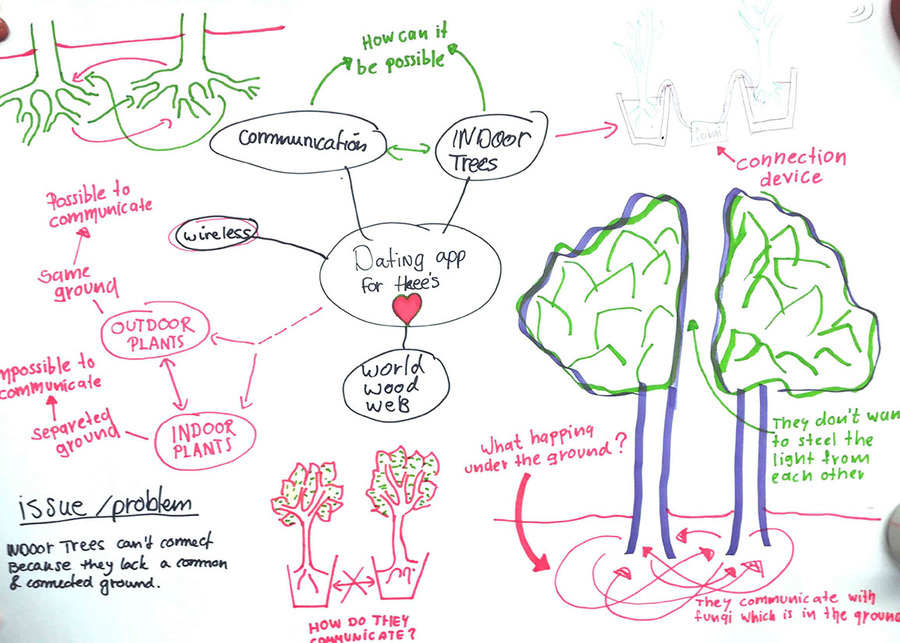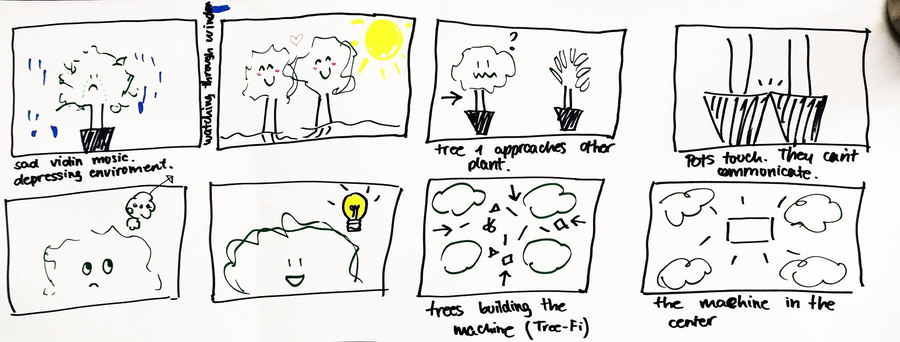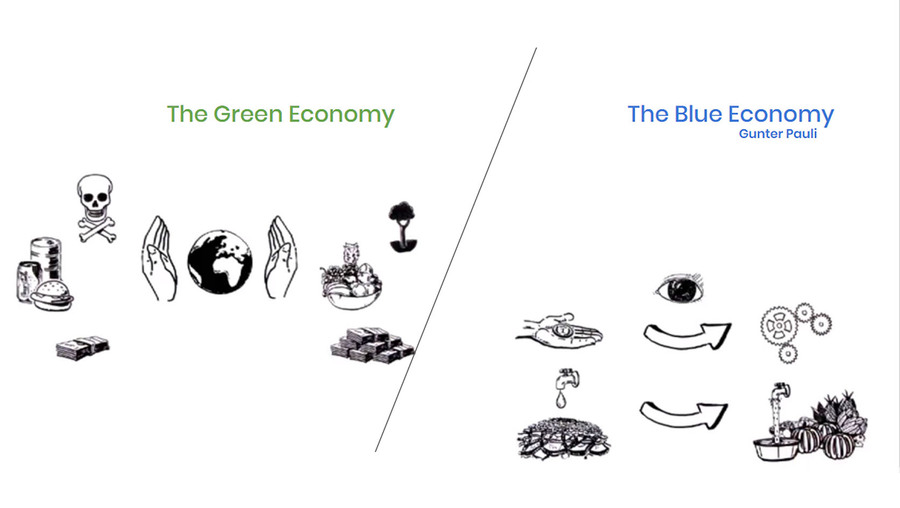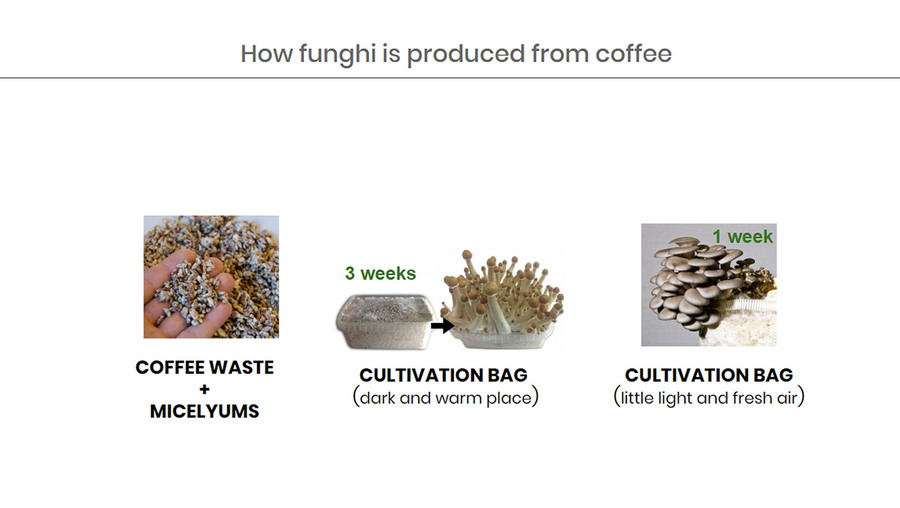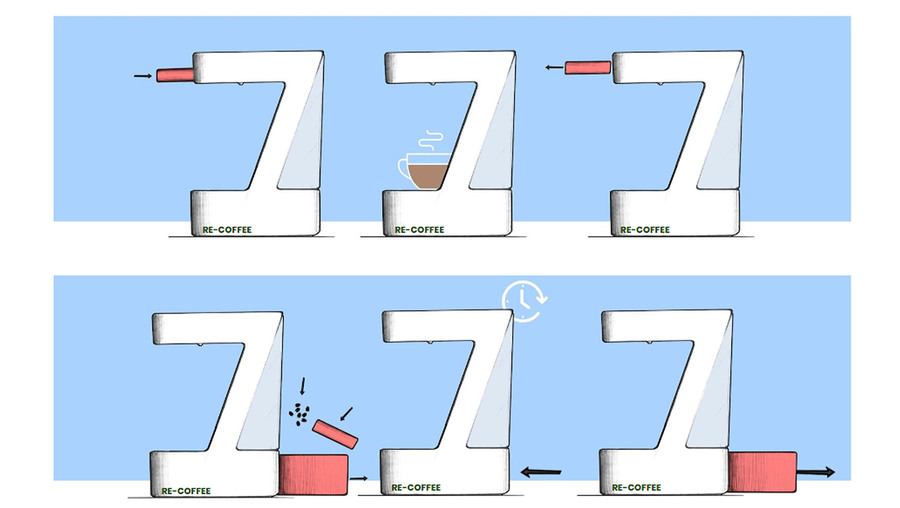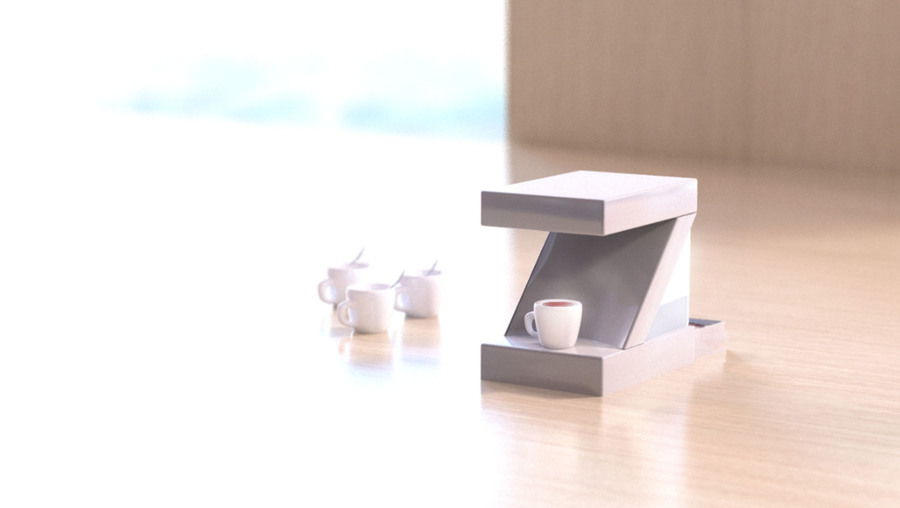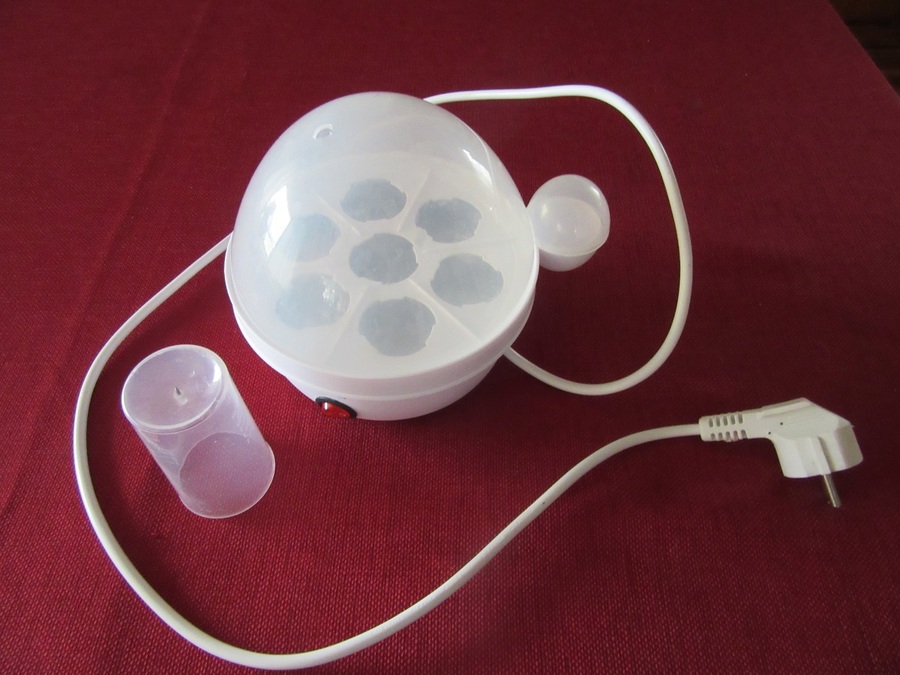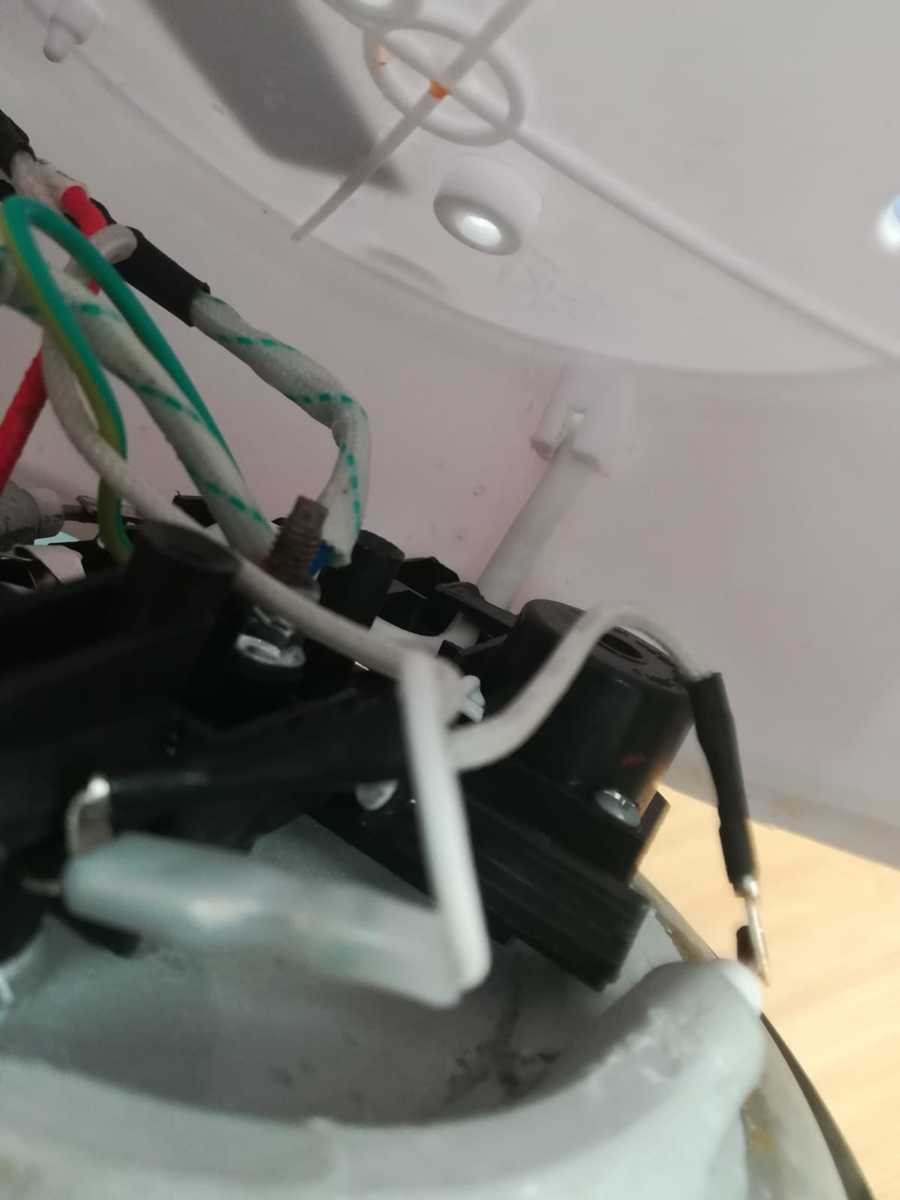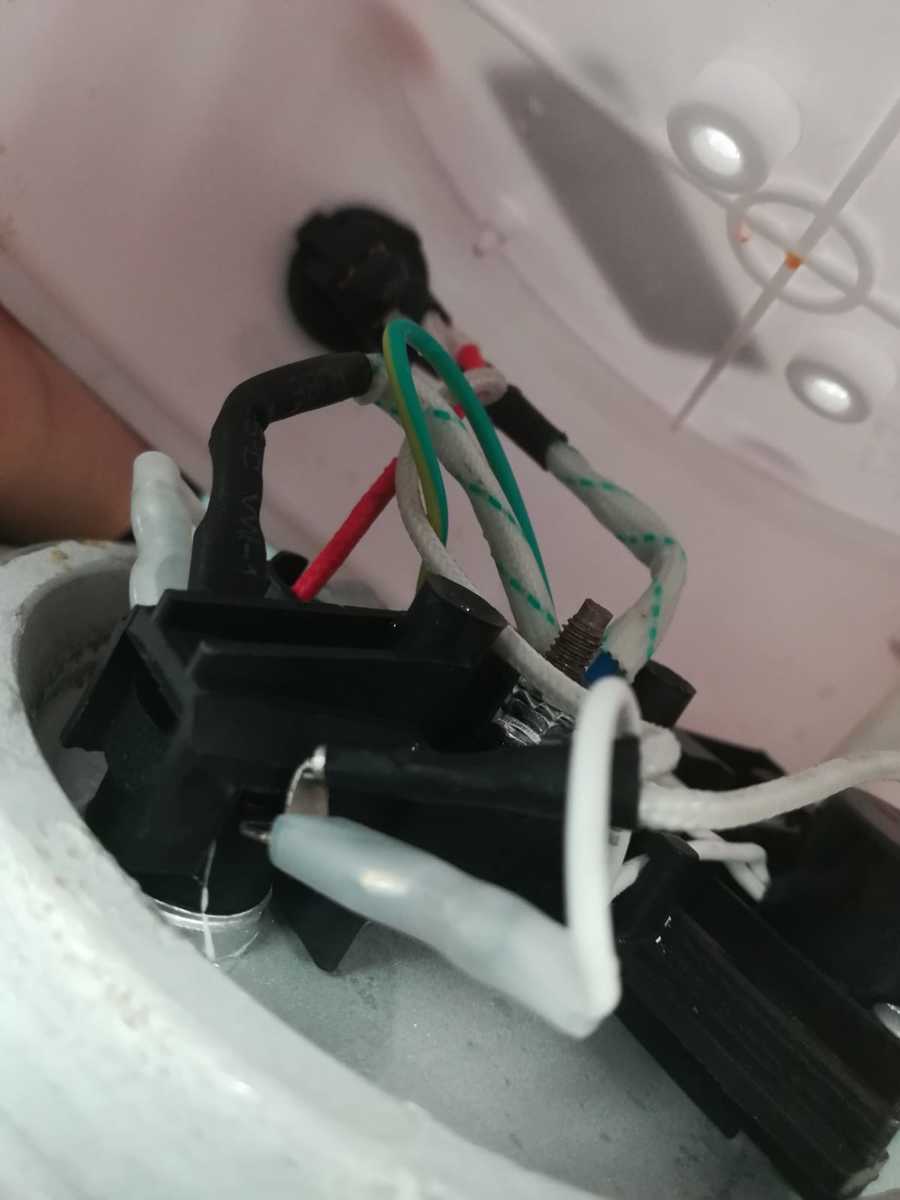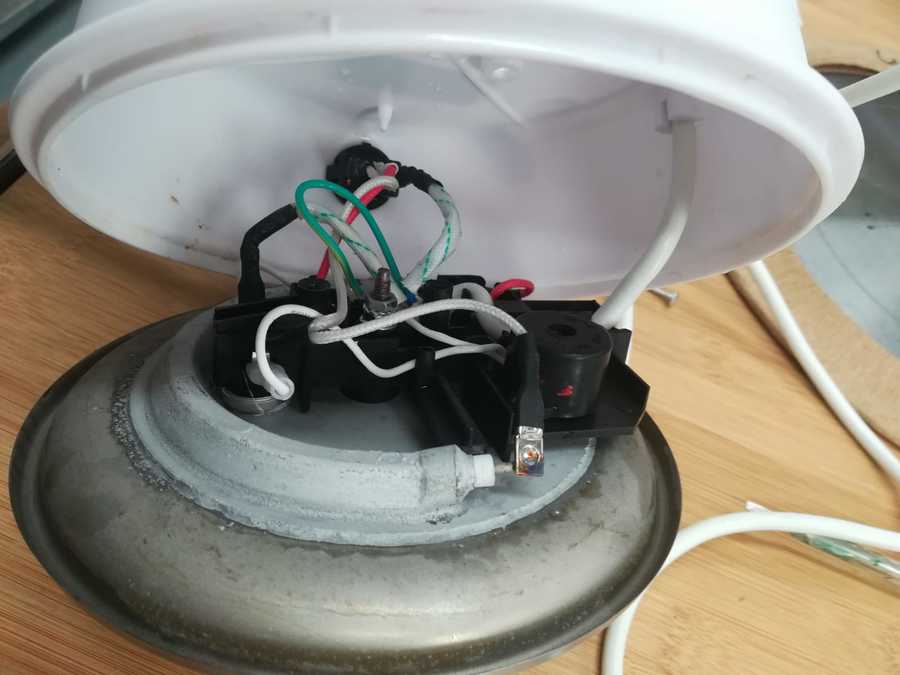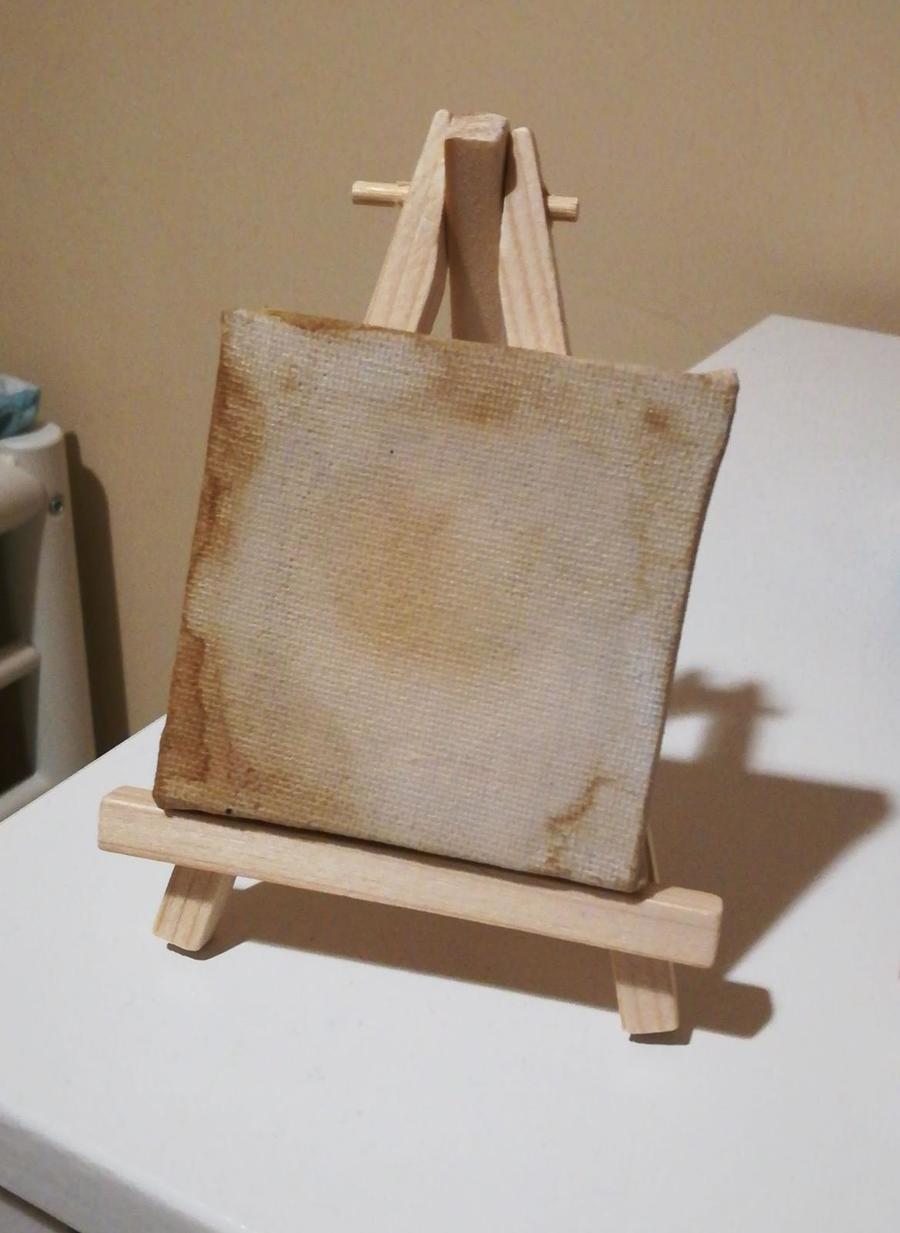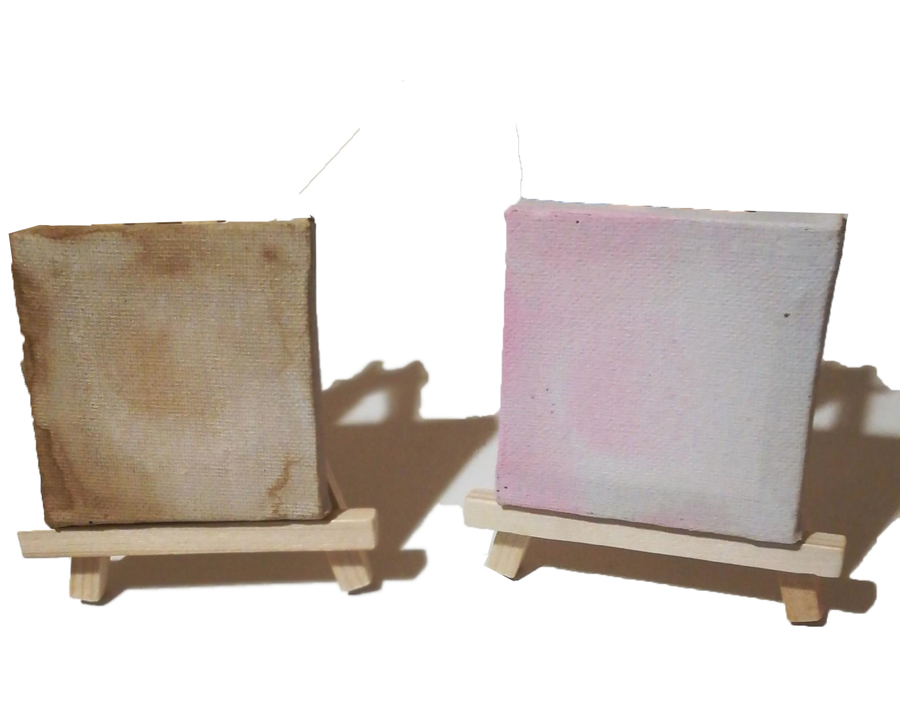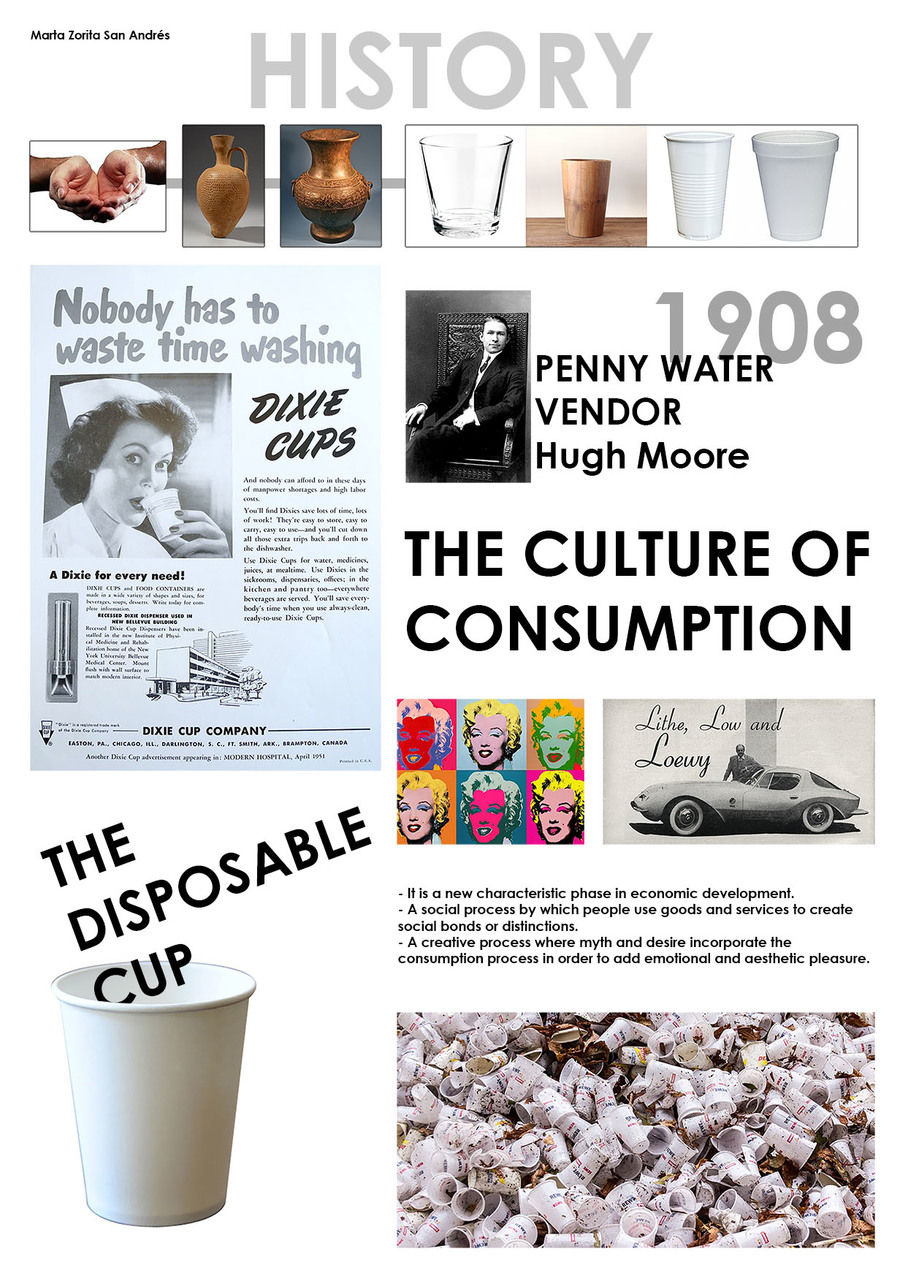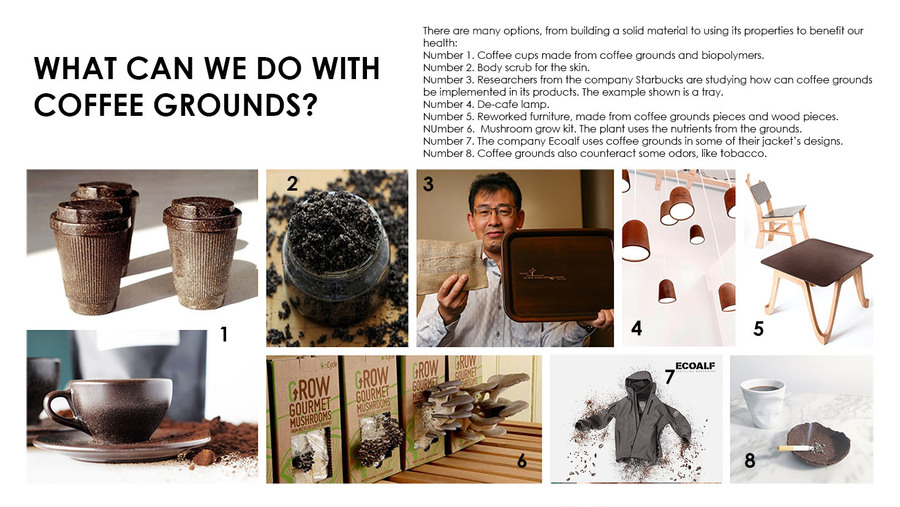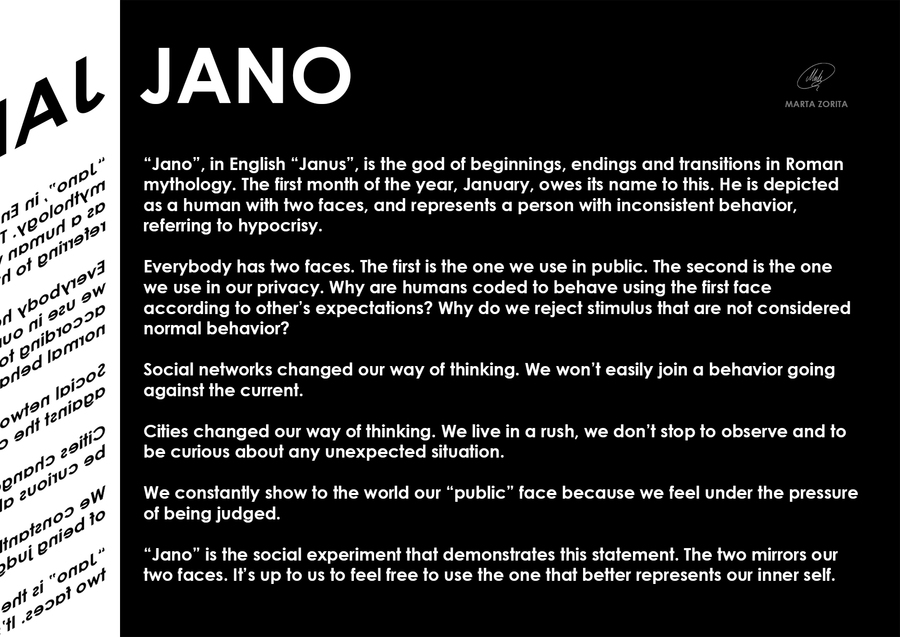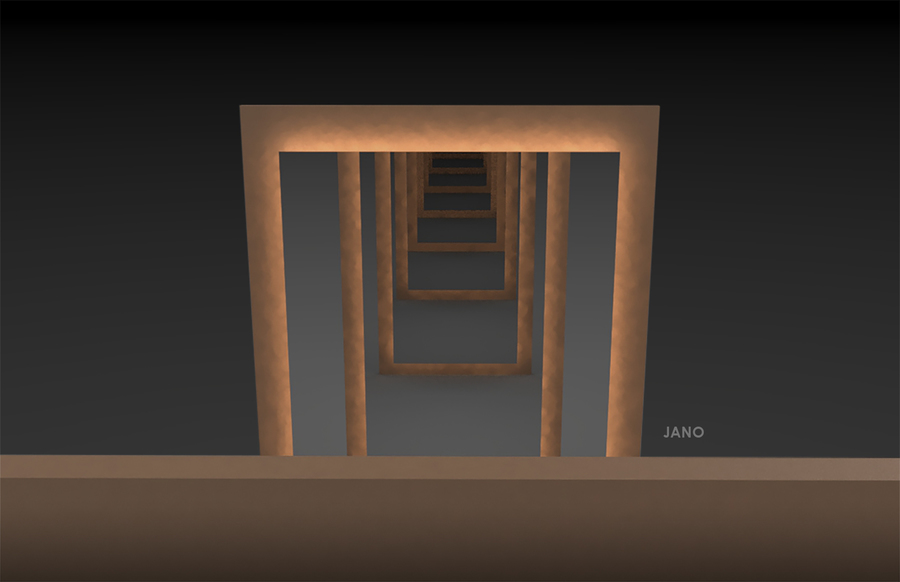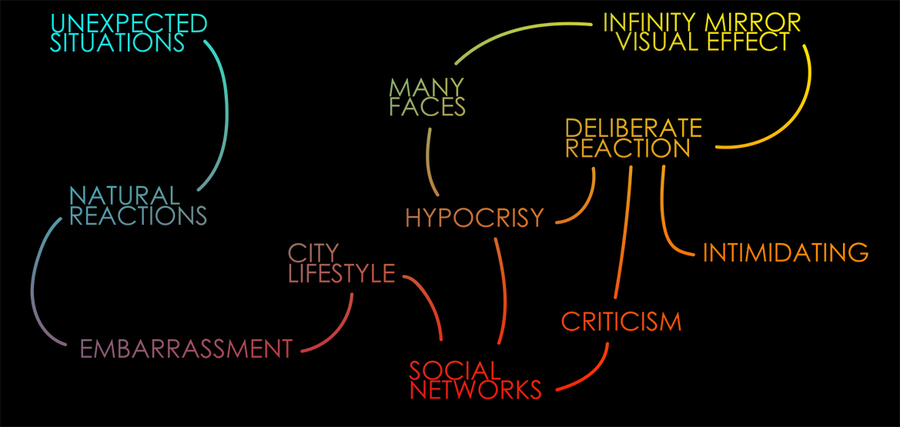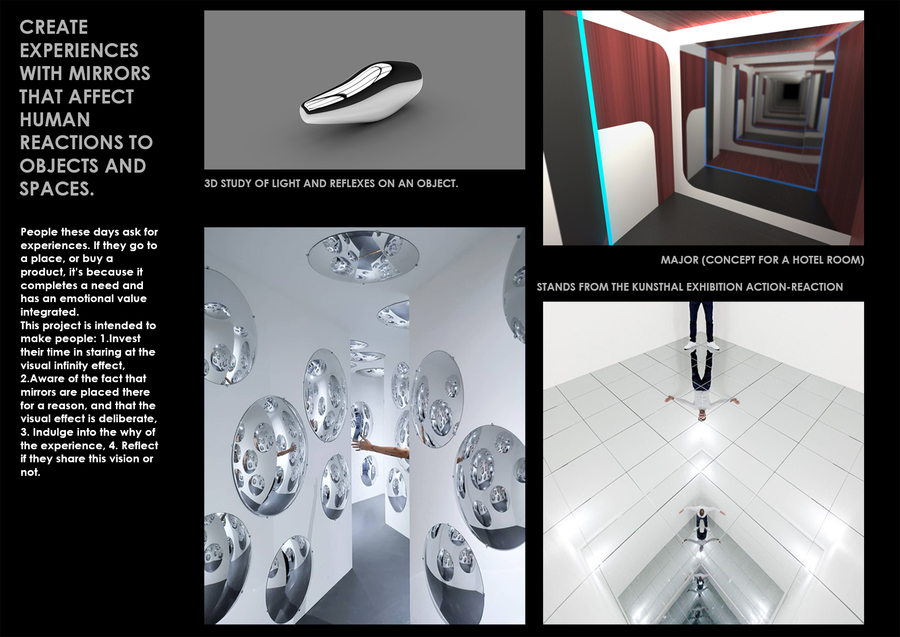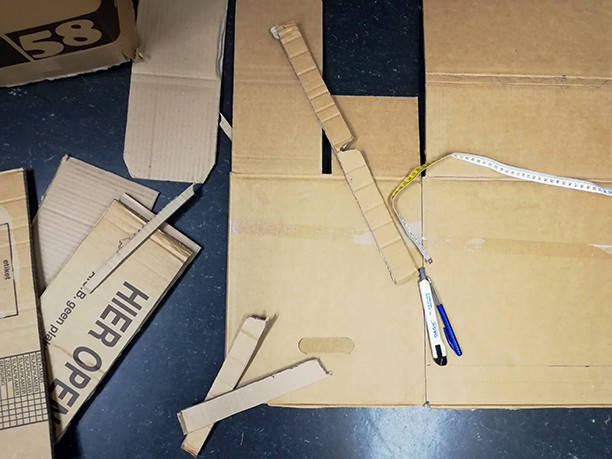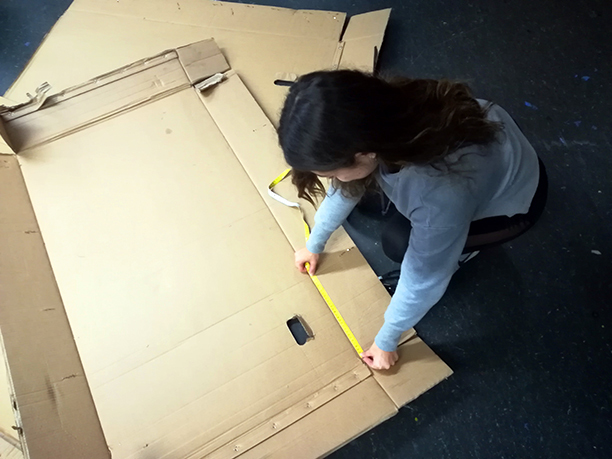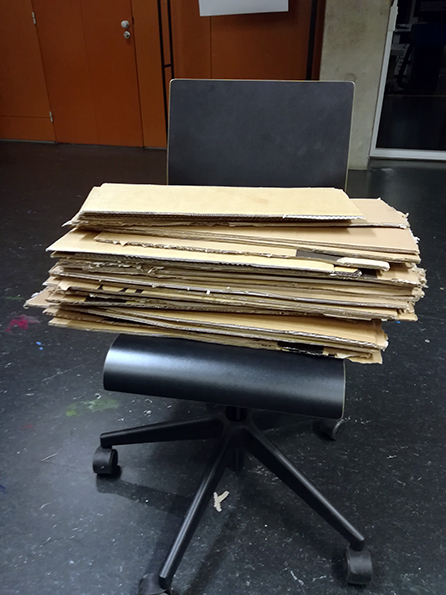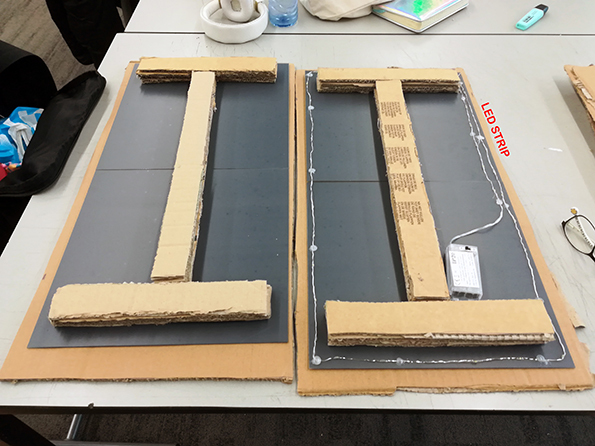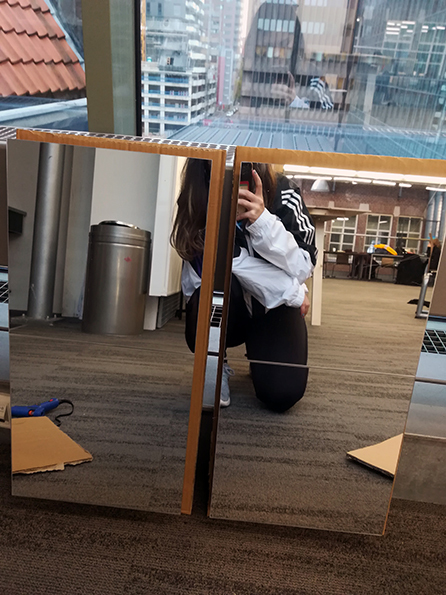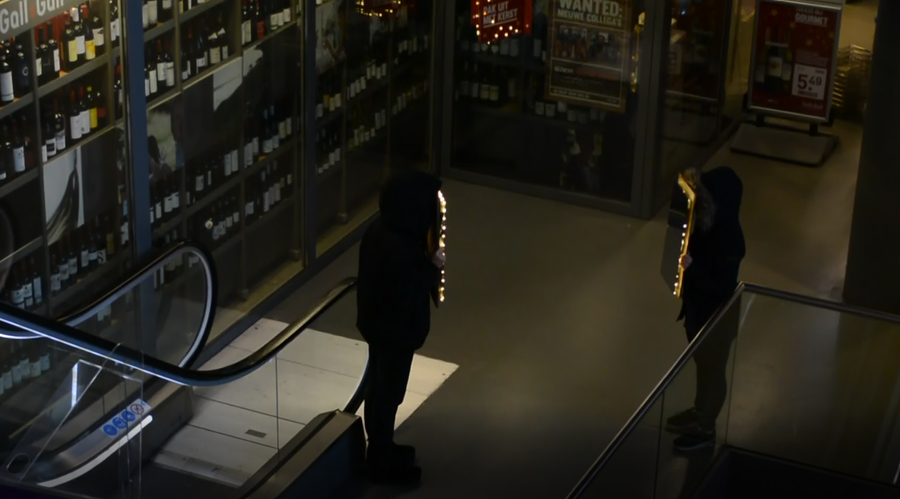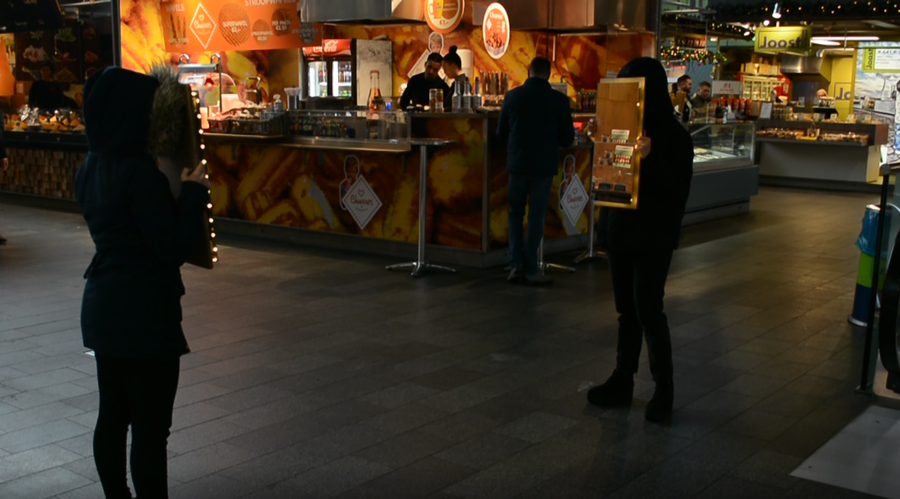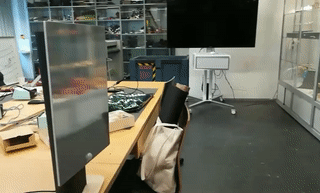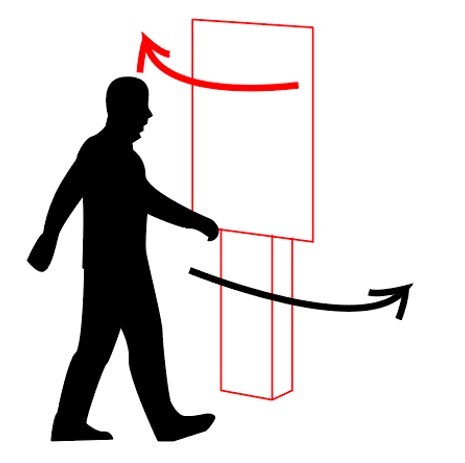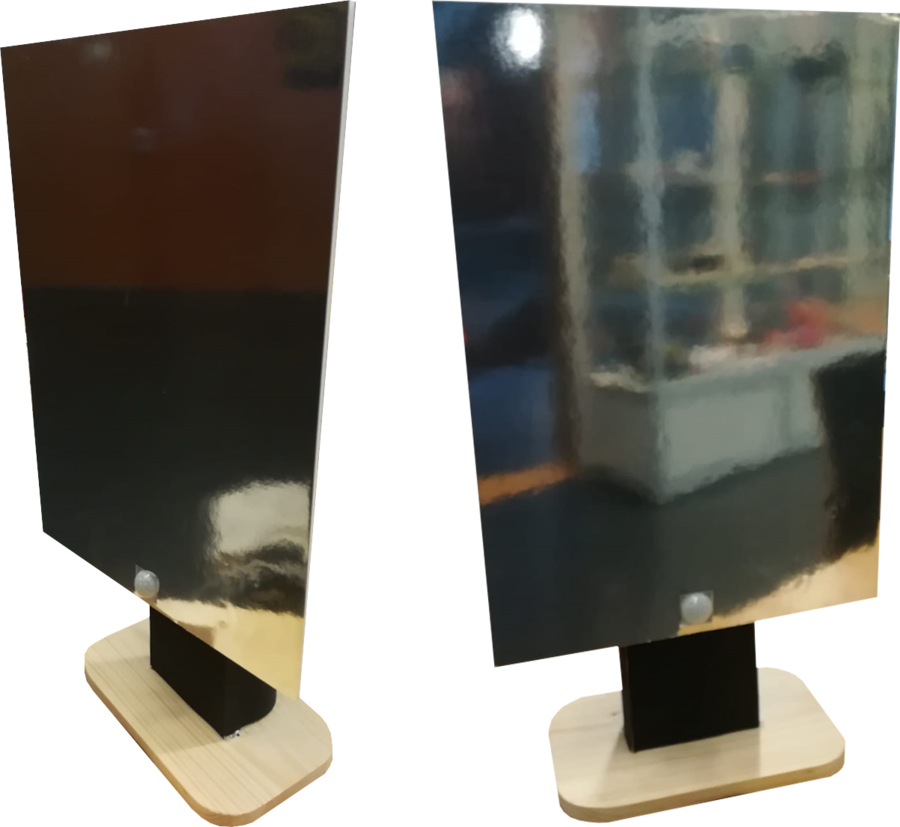User:0975652
Contents
INFO
Marta Zorita San Andrés
0975652@hr.nl
LinkedIn: [1]
Behance: [2]
PROJECT 1 : TRIFI
All trees are connected to a sort of web, alsoknown as the world wood web. This system connects all trees via fungi system embedded in all the roots of the trees. This system let trees communicate with each other and let them give each other information. This could be nutrients or poison or this could be something else. Because we felt sorry for all indoor trees who are out of this web, we wanted to find a way how 2 or more indoor plants would be able to wirelessly connect with eachother and share information. This is our "dating app for trees".
VIDEO : [3]
PROJECT 2 : RE-COFFEE
When we were first looking for a concept, we thought of details we could improve or change in our daily routine. And, for us, coffee is part of this daily routine. So, we wanted to design something involving coffee but, how could it be related to nature?
After indulging, we discovered the concept of blue economy, a concept invented by Gunter Pauli. We are going to compare it to the green economy so it is easier to understand. The green economy consist on the fact that buying eco-friendly products is way more expensive than other less healthy options. This healthy products are not affordable in a long-term consumption for most of us, so this is not effective and ends up damaging the planet. Instead, blue economy consists on turning waste into new resources. In this way, we turn poverty into abundance from our homes.
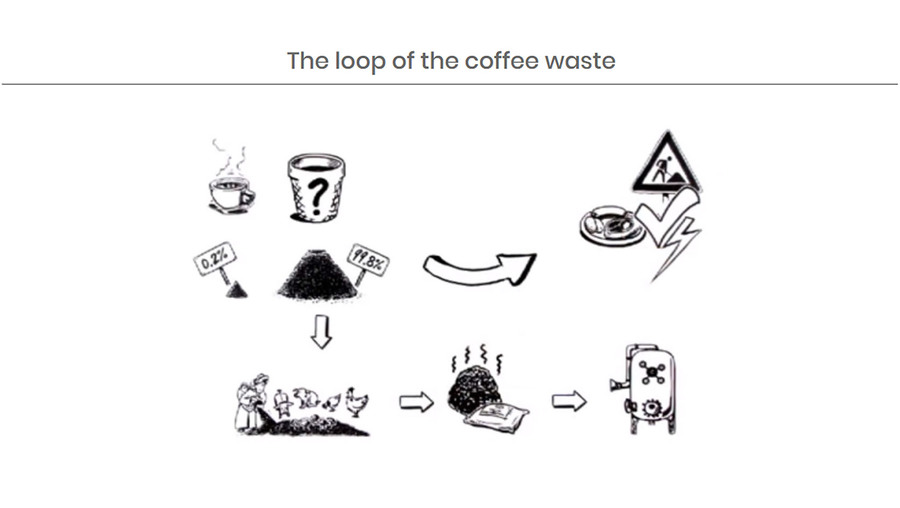
At this point, Gunter Pauli also mentions the example related to coffee that we are going to use in order to design our concept.
We only use the 0.2 % of the coffee, the rest is waste coffee.
What can we do with the rest? We discovered that with wasted coffee we can grow mushrooms.
And then feed the leftovers to animals.
Animals make manure and bacteria make biogas.
At the end we get jobs, energy and food
1 Break it up and spread it out throughout the coffee.
2 Put the mixture into your cultivation bag and close it up tight, ensuring you have cut air holes.
3 Place your bag in a warm and dark place. During the next three weeks,water this area twice daily with water, you will see the micelios come to life and grow across the coffee grounds - turning the whole mixture white so it has fully colonized the mixture.
4 Place it in a spot with plenty of fresh air and a little light.
5 After a week or so, you will start to see tiny little mushrooms bursting into life.
Finally, we came into the concept of a coffee machine that would grow mushroom at the same time. The mushroom growth compartment is placed under the water tank, so the mushrooms could be watered automatically. After the necessary time for the mycelium to develop, it is taken to a place to finish their growth properly. As a further possibility, we also imagined that the filter to make the cup of coffee could be made out of the mushrooms, so the loop would be closed; the coffee machine would work with the matter it generated.
PROJECT 3 : BOILING ART (BLACK BOX)
We chose an egg boiler as the starting point. In this image you can see the model it is and how the product looks.
What we needed to do first was to open it, so we could know how it works and what components it has.
-The heating system has a circular shape so it can cover the whole surface.
-A device that is programmed to make a noise when the eggs are cooked.
-The rest are wires that connect everything with the on/off button.
In the end, we decided to regard this project from another perspective. What if instead of controlling the cooking time of the machine, we let it act by itself? By adding pigment into the boiling water and placing small canvas inside, the machine could create small pieces of art. Every artpiece would be different from another. Thus, this way of painting is not controlled by humans, but controlled by the machine itself. This fact makes this art completely unpredictable; only the machine "decides" what's about to happen.
What we wanted to aim was to represent the concept of controlled randomness in art. Our project was just controlled by a machine, but we also want the human to interact somehow, but not completely. That's why we came up with the idea of turning this device into a painting tool. The human would use it as a brush to paint a surface. The role of the machine is to paint in an unpredicted way to the surface the human places it. The human would control where the machine paints, so he/she would share the control with the machine.
This is materialised in the trial canvas you can see in the pictures below. To make the brown one we used coffee as pigment and to make the pink one we used pink watercolor as pigment.
PROJECT 4 : MAPPING THE COFFEE
HISTORY AND CONTEXT OF THE DISPOSABLE COFFEE CUP
In prehistory, primitive man put his hands together to form a bowl and drink. Later, this would be replaced by horns, fruit hulls, pieces of hollowed wood, until the pottery allowed the development of domestic utensils.The ceramic vessels can be considered the precedents of the cup, until they were replaced by their competence in metal and alloys. Thus, the cups could adopt more varied and luxurious forms with the passage of time. Although during the century the cups were made of wood, metal, vegetable containers (shells), in the 21st century the topical material of manufacture is glass, the material par excellence for the elaboration of glasses. This is reflected in some languages such as English, German or French in which, respectively, the same word is used for glass and glass: glass, glas, verre, respectively. In addition to glass, the cups can be manufactured in different plastics , paper, metal or ceramic. In 1908, Hugh Moore, an American industrial entrepreneur, created the Penny Water Vendor to serve pure and fresh water. The invention consisted of three separate compartments: the upper one for the ice, the medium for the water and one tank for the used cups. One sign recommended that the glasses should not be reused. Some of this devices were installed at strategic points in New York, but nobody bought the water from Moore, whose company established was in danger of disappearing. But his luck changed when a public health official, Dr. Samuel Crumbine, became interested in an unexpected aspect of Moore's invention. At that time, water used to be drunk in public taps with the help of a metal cup that was rarely washed, let alone sterilized. Dr. Crumbine saw in the disposable cups of Moore's invention the key to his health crusade.
That same year of 1908, Kansas passed the first state law to abolish community cups as an essential part of an anti-tuberculosis campaign, supported by the report of a biology professor at Lafayette College, who after placing fragments of several public cups under a microscope had discovered the alarming varieties of germs present there. The sanitary measures were extended to other states. Railroads, schools and offices began to buy disposable paper cups, considered from then on as a guarantee of health.
Currently, they are manufactured in paper, plastic (polypropylene) and foam (expanded polystyrene). Linked to the phenomenon of consumption, they are a common source of household waste.
Consumption is a way of understanding and giving meaning to products. The consumer culture indicates that consuming is a fundamental part of our day to day and cultural values. Mass consumption began after the Second World War in the United States. Movements such as Styling and Pop Design, promote and mobilize consumer culture. Summarizing this concept in a simple way in three points:
- It is a new characteristic phase in economic development. - A social process by which people use goods and services to create social bonds or distinctions. - A creative process where myth and desire incorporate the consumption process in order to add emotional and aesthetic pleasure.
On the other hand, not everything is development. The culture of consumption goes hand in hand with obsolescence and the culture of waste. A point has arrived at which we consume without any reason and more than we should without thinking about the consequences that this can cause the planet. At this point, disposable cups are a big waste problem. It has been estimated that the average household discards about 70 disposable cups each year.
PROJECT 5 : MY CRAFT: WRITTEN ASSIGNMENT
Imagine a situation in which two people in the 18-22 age range first meet each other. A curiosity of that moment is that the same thing always happens. They always ask the same three initial questions. These are:
1. What is your name? 2. How old are you? 3. What do you study?
In my case, the conversation that arose after answering the third question became routine. When they ask me what I study, I answer that I study Product Design. At this point in the conversation, I have found myself over and over again in the situation of having to explain what it is, since it is a little uncomfortable for the other individual to begin to assume that Product Design is the same as studying Engineering Product, or that is the same as Graphic Design. They have even told me that it is the same as Marketing.
I must say that at the beginning I answered a phrase that after so much repetition, I ended up learning it head first. He always answered that "Product Design consists in the creation and development of any tangible product that can be manufactured and launched on the market". It sounds like something out of a dictionary, right?
On the other hand, the more projects I did and the more things I created, I realized that this is not the case. That definition was very incomplete. From that moment, to these people, I answer the truth: that I do not even know what it is.
Right now I am taking the time dedicated to writing this text to reflect on what is really Product Design. Product Design is everything and nothing at the same time. It has infinite possibilities and infinite ramifications. It covers anything; ideas, products, experiences, activities, materials... Truly, the list is infinite.
I do not feel overwhelmed when I see a blank paper, because I know that this paper may be the next project to fall in love with. The beauty of ideas is that they are abstract and that they really are nothing, but potentially they are everything. Its infinite number of possibilities is what attracts me to this career and it is the reason that makes me stay in it and want to shape my future in relation to it.
Like any good product designer, I must take into account the economy of experience that rules the market today. And that is difficult; every time there are more needs, which must be covered in a shorter period of time, because they change quickly. An easy way to cover those needs is by offering experiences linked every object. Apart from being functional and aesthetic, it should offer its user something new. And that “something” must be felt as unique for every individual.
To carry out any concept, I must identify the tools present in my knowledge and those present in my environment. Among all of them, some of the fundamental ones are 2D and 3D editing programs, design books, manual drawing and drawing techniques and the most useful but undervalued: internet.
These tools are from a technical point of view. Of course, we must take into account other types of tools, which for me are the most effective: the contacts that help me improve my projects with good feedback and help me improve myself as a person. I consider the feedback of the most important; I like to design for what people really need.
These people will usually be of the millennial generation. They are our main consumer, and their most influential feature in the products is their concern for the environmental, cultural and social impact. That is why I chose to design a space according to the preferences of the user.
The important thing about this project is to create an emotional value around the space linked to economy of experience and user awareness. This one, must feel involved andnaware of the useful life of the product, in addition to the input and output that they cause will influence the product and its environment.
Despite the usage of experiences as a part of our everyday products, services and actions is still a recent discipline, it has its record. It is said that the User Experience has its beginning in the middle of the Second Industrial Revolution, when machines started to replace industrial activities made by humans. This fact improved the workflow and they started to be given importance. A part of the User Experience had just been born.
The next example in time comes with the introduction of the telegraph and the telegram.
Later, it began to be applied in the ergonomics of products, tasks and tools at workplaces, so the worker would find it pleasant and more comfortable to do his/her job.
A key point in history of User Experience is the opening of Disneyland in 1955, the largest project focused on the user experience so far.
Finally, we come to the genesis of interaction design and interfaces as we know them today. Xerox PARC, in 1970, developed the graphical user interface (GUI), the windows, the check boxes, radio buttons, menus, mouse and many other things related to current computing such as object-oriented programming, laser printing or the Ethernet standard.
In 1995, Donald Norman coined the term User Experience Design and called himself "User Experience Architect" while working at Apple Computer. He described his role as the harmonizer of the user interface and the industrial design process.
Since 1990 UX has grown exponentially. It is at this time when well-known characters emerge in the current web industry as Jakob Nielsen, Alan Cooper and Steve Krug.
All this brings us to the present, in which the user experience is a fundamental characteristic to achieve a product or a service to be successful.
Speaking more about the future rather tan the past, there are some realities linked to product and spatial design that are just around the corner:
- The Internet of things and connectivity in products makes our day to day easier.
- Technology increasingly replaces repetitive and heavy activities.
- Smart Homes and their development are in the spotlight.
- Wearables are gaining ground to the typical accessories of our day to day.
- The DIY movement and 3d printing technology help us easily prototype without limits.
- Business models based on sharing the service (Uber, Airb & b) gain popularity.
- The Economy of experience in products and services is something daily in our lives.
Being then aware of the present, we are not interested in designing what will be in the world in 30 years, but focus immediately on what is down the road.
My craft is to give shape to these disciplines, and that the user carries out an exercise of awareness with the product and its context.
PREVIOUS TO PROJECT 6
This is the first version of the project. The possitive aspects: It had a philosophycal inview. It had a context. It tried to make people interact through an object (the mirror) and other person (in this case, me, holding the mirror). The aspects to improve: As well as it tried to create interaction, it didn't succeed in creating it totally. The next step would be to make the mirrors independent and create a direct interaction between person and machine.
THE MOUNTING PROCESS OF THE MIRROR FRAME
1. Cut cardboard from bike boxes with the shape of the frame and pieces.
2. Glue with a hot melt glue gun the mirrors to the cardboard pieces.
3. Glue the LED strip to the mirror. The goal of integrating a LED strip into the design is to call the attention of the bypassers.
PROJECT 6: FINAL ASSIGNMENT
For this project I wanted to upgrade the previous one by making an independent moving mirror.
We live in a society full of criticism for appearence. By looking at ourselves in a mirror, we try to fill in our ego. We try to make sure that we will look good for the others and we will cause on them the impression we want to. We are so focused on creating an image of ourselves that the rest of the people like, that we end up not paying attention to the rest of the world. That, makes us hypocrytes.
A mirror is made to look at yourself. In his case, you can’t. The mirror avoids you. Its like an anti design: a product intended not to do what it is supposed to do. It is deliberately intended to create an uncanny effect on the user, who will be annoyed by the fact that the mirror won’t care about them. The same happens with society.
In this case the mirror that avoids you is the representation of the rest of the society. As well as the mirror doesn’t care for your image, neither society does. So the critic is that even if we spend hours checking ourselves in a mirror, no one will notice as much as we do of our flaws and strong points because we look to assure our ego.
This project is thought to be at a space where people go to think. A space like a museum, where art is regarded as art and everybody knows that there is a hidden message behind every work of art.
What did I learn? I gained skills working with Arduino which involve the comprehension of the code. I also learned how to control the motors and discovered new sensors like the PIR, which I didn't know existed. I also used a lot the wood station for the structure, where I learned how to use tools to cut, smooth and screw the wooden pieces. I also learned how to use the Ultimaker 3D printer.
